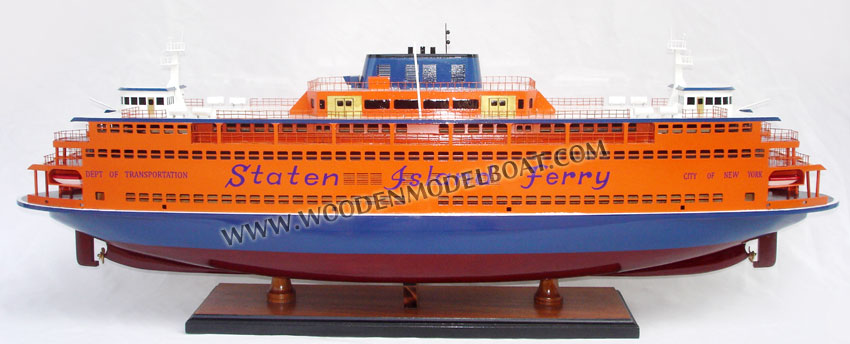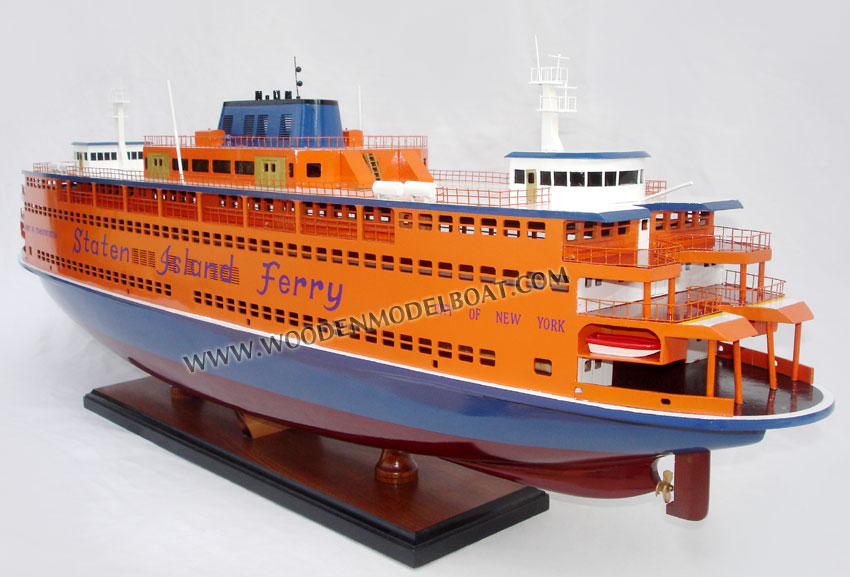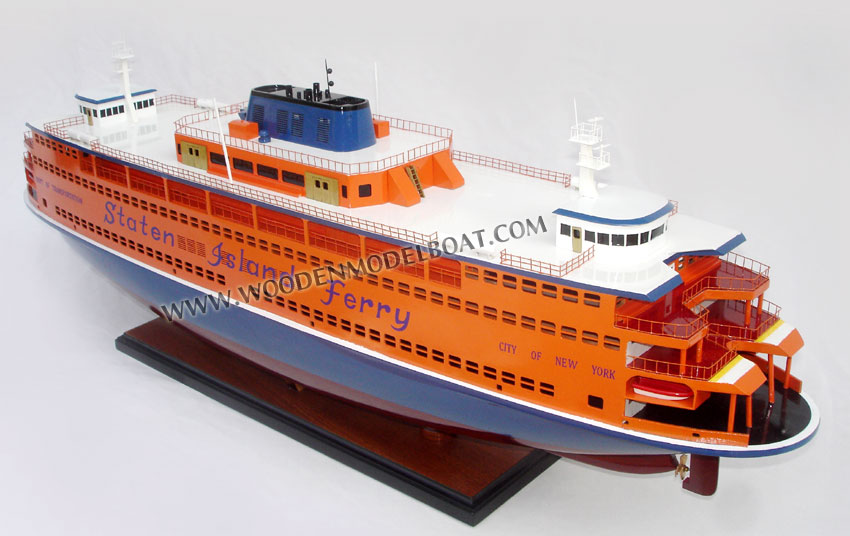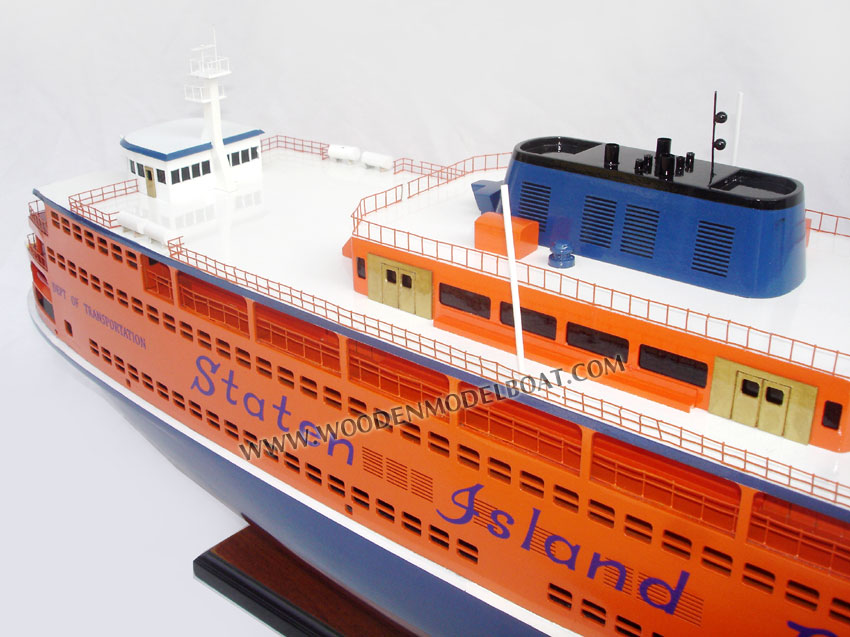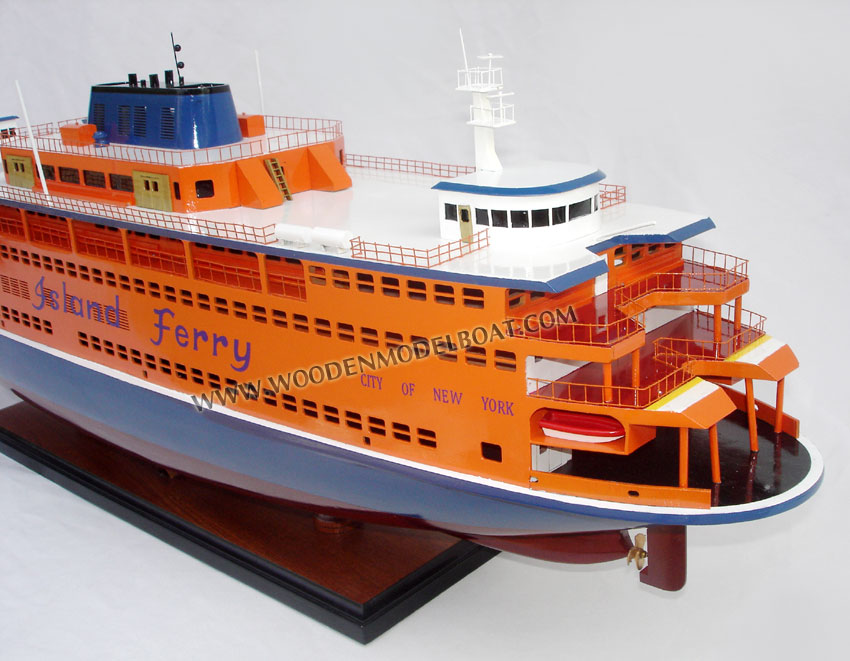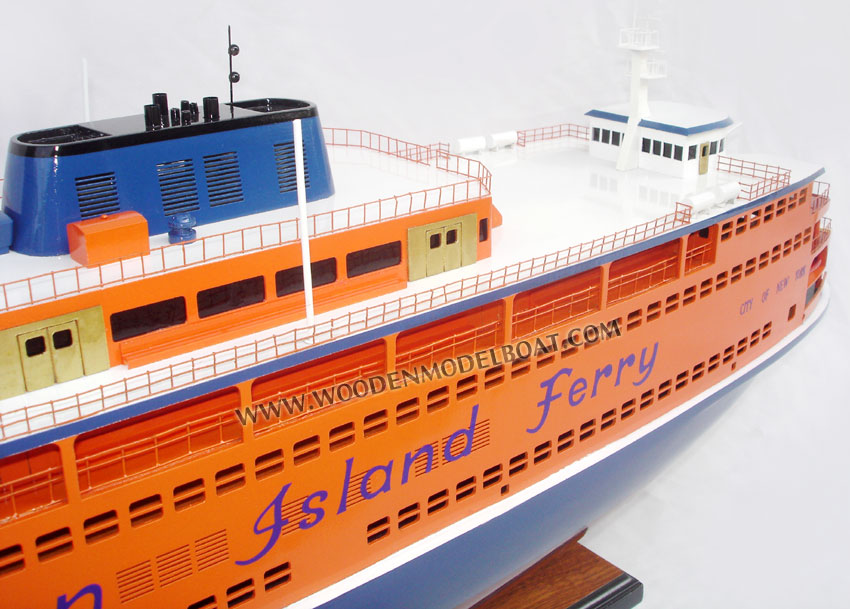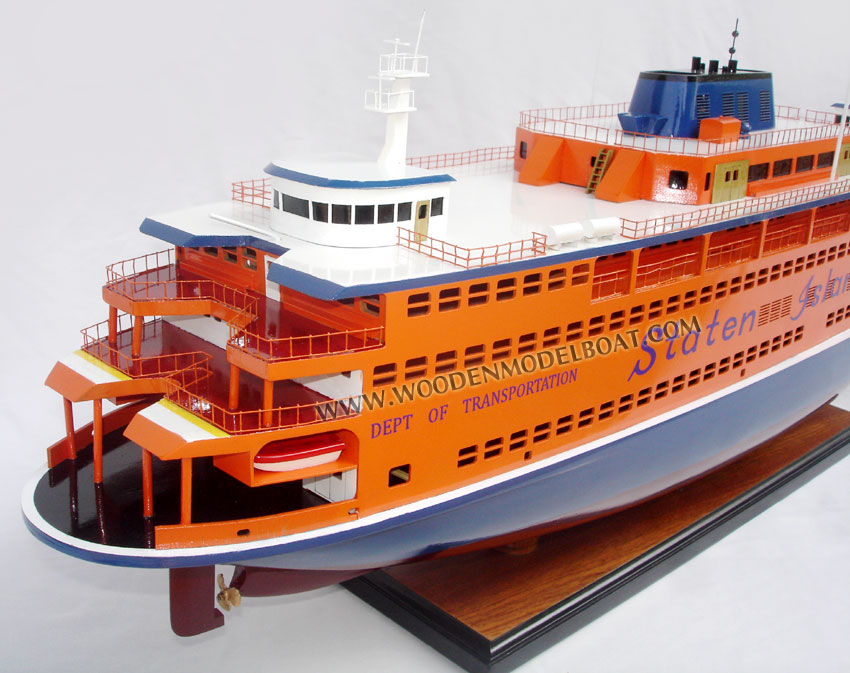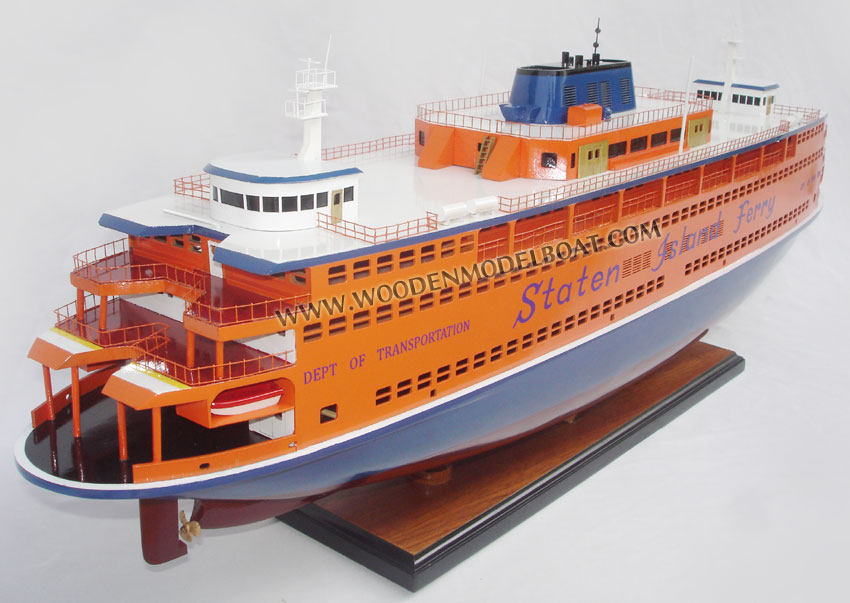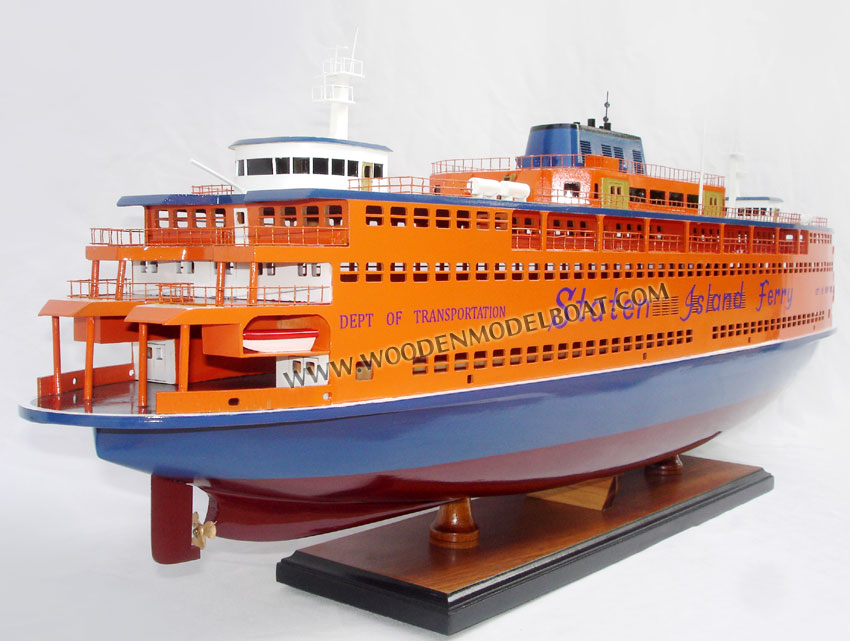|
HISTORY
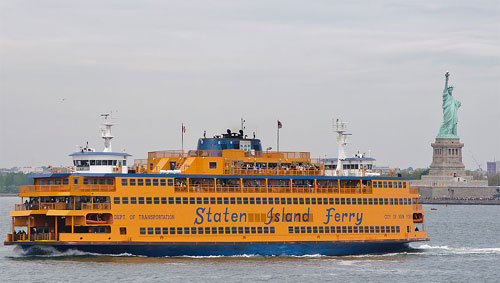
The Staten Island Ferry
is a passenger ferry service operated by the New York City
Department of Transportation that runs between the boroughs
of Manhattan and Staten Island.
Overview
The ferry departs Manhattan from the Staten Island Ferry
Whitehall Terminal, South Ferry, at the southernmost tip of
Manhattan near Battery Park. On Staten Island, the ferry
arrives and departs from St. George Ferry Terminal on
Richmond Terrace, near Richmond County Borough Hall and
Richmond County Supreme Court. Service is provided 24 hours
a day, 365 days a year. The Staten Island Ferry is quite a
reliable form of mass transit, with an on-time performance
of over 96 percent. The Staten Island Ferry has been a
municipal service since 1905, and currently carries over 21
million passengers annually on the 5.2-mile (8.4 km) run.
The five-mile (8 km) journey takes about 25 minutes each
way. The ferry is free of charge, though riders must
disembark at each terminal and reenter through the terminal
building for a round trip to comply with Coast Guard
regulations regarding vessel capacity and the place holding
optical turnstiles at both terminals. Bicycles may also be
taken on the lowest deck of the ferry without charge. In the
past, ferries were equipped for vehicle transport, at a
charge of $3 per automobile; however, vehicles have not been
allowed on the ferry since the September 11, 2001, attacks.
For most of the 20th century, the ferry was famed as the
biggest bargain in New York City. It charged the same
one-nickel fare as the New York City Subway but the ferry
fare remained a nickel when the subway fare increased to 10
cents in 1948. In 1970 then-Mayor John V. Lindsay proposed
that the fare be raised to 25 cents, pointing out that the
cost for each ride was 50 cents, or ten times what the fare
brought in. On August 4, 1975, the nickel fare ended and the
charge became 25 cents for a round trip, the quarter being
collected in one direction only. The round trip increased to
50 cents in 1990, but the fare was eliminated altogether in
1997.
There is commuter parking at the St George Ferry terminal,
which is also the terminus of the Staten Island Railway. On
the Manhattan side the new Staten Island Ferry Whitehall
Terminal, dedicated in 2005, has convenient access to
subways, buses, taxis and bicycle routes. The ferry ride is
a favorite of tourists to New York as it provides excellent
views of the Lower Manhattan skyline and the Statue of
Liberty. The ferry, like the subway system, runs twenty-four
hours a day, with service continuing overnight after most
day peak traffic has ceased.
The route of the Staten Island Ferry across Upper New York
Bay is shown in yellow on a TERRA satellite photo of New
York Harbor.
In addition to the ferry, the city also provides a number of
Manhattan to Staten Island bus services, but Staten Island
has no passenger rail connection to any other Borough,
either by bridge or underground, due to the cancellation of
the Staten Island Tunnel in the 1920s.
While the ferries no longer transport motor vehicles they do
transport bicycles. There are two bicycle entrances to the
ferry from either borough. The bike entrance is always on
the first floor so bicyclists can enter the ferry from the
ground without needing to enter the building. The ground
entrance is also reserved exclusively for bike-riders
(everyone else must use the 2nd floor entrance). Cyclists
must dismount and walk their bicycles to the waiting area
and onto the boat and bicycles must be stored in the
designated bicycle storage area on each boat. Cyclists are
subject to screening upon arrival at the ferry terminals.
The ferry is a popular place to go on Saturday night; beer
and snacks are served. |

